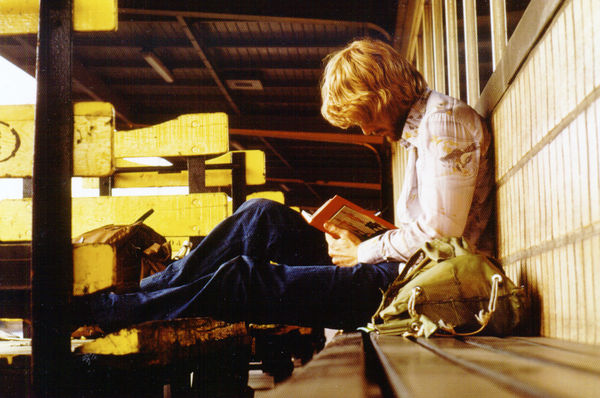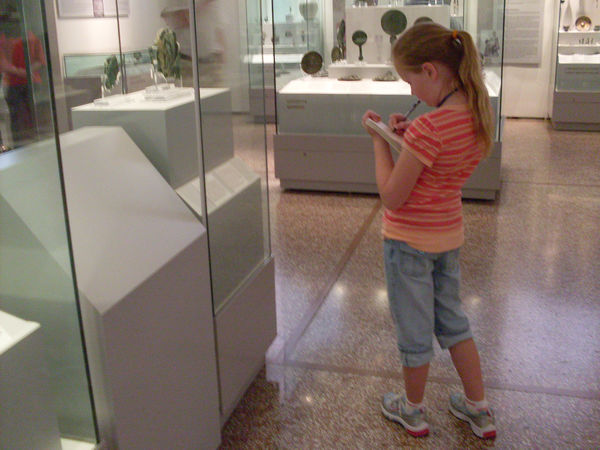The Zen of Travel Journaling
By Rick Steves

When I travel, I make it a habit to collect only one thing: memories. The most treasured keepsake of any trip I take is the journal I bring home, filled with descriptions and observations of the people I've met, the places I've seen, and the experiences I've had.
Thinking back, it seems I've always had a desire to capture my discoveries and eureka moments in a journal. On my first trip to Europe, as a 14-year-old, I collected and logged my experiences in a file of a hundred postcards, each numbered and packed with my notes.
Thereafter, every trip I took inspired my passion for filling up an empty journal, even when I was just a footloose vagabond with no career goals. But with practice, I became a keen and disciplined journaler.
I now have a set routine: On the flight over to Europe, I make a personal inventory of my mindset and my hopes for the trip; on the plane ride home, I write with a similarly introspective wrap-up. And each night in between, I don't drift off to sleep before cataloging my day's experiences, discoveries, and thoughts into that book.
Without capturing your thoughts on paper (or on your laptop or tablet), the lessons of travel are like shooting stars you just missed…and butterflies you thought you saw. Collecting intimate details on the road, and then distilling them into your journal, sharpens your ability to observe and creates a keepsake you'll always cherish.
You don't have to give a chronological account of your journey. In fact, you probably shouldn't. Consider just sitting somewhere interesting and writing about your immediate surroundings or focusing on a specific interaction you've had with a local.
Leave out the boring stuff. Ten years from now, you won't feel the need to recall the mediocre meal you grabbed at that café or the quality of the hotel's complimentary breakfast. You want to include details that capture the character of a place as well as your personal response. Throw in sketches, mementos, little paper souvenirs like maps and old tickets — anything that takes you back to that moment.
Some of the fun of writing is choosing a journal. I prefer a minimalist design: light, yet with stiff enough covers to give me something solid to write on in the absence of a table. I like invitingly empty pages — no extra decorative frills or verbose doodads. I write in black ink or a mechanical pencil, allowing my simple words to be the focus. Consider a bound book; spiral notebooks tend to fall apart. After your trip, a bound book can become a classic on your bookshelf.
The key to good journaling is being both observant and disciplined…to take the time to notice what you're noticing. Hiking deep into a misty English moor as a teenage traveler, I wrote, "Long-haired goats and sheep seem to gnaw on grass in their sleep. We were lost in a world of green, wind, white rocks, and birds — birds singing, but unseen. Then we found the stones, standing in a circle as if waiting for us to come. And in stillness, they entertained. After being alone with that private stone circle, the more famous Stonehenge — with its barbed wire, tour buses, and port-a-loos — won't quite make it."
It was on the boat to France the next day that I worked on those rough notes. And it was then that I realized what I wanted to do for a living: finding hidden bits of Europe and bringing them home through my writing.
Now, decades later, I still snare those happenings as they flutter by, eager to see what I can build with all that fun raw material. On my last trip to Helsinki, I was so flustered by the language barrier in an extremely untouristy sauna that I didn't know how to get a dry towel. Sitting in the corner to air dry, I decided to pass the time observing and jotting down ideas for my journal:
"People look more timeless and ethnic when naked with hair wet and stringy. The entire steamy scene was three colors: gray concrete, dark wood, and ruddy flesh. Surrounded by naked locals (each with a tin bucket between his legs — used to splash cool water on his face), there was absolutely no indication of what century I was in. But from the faces, it was perfectly clear: this was Finland."
With those notes, I can stoke my memories and revisit that sauna for the rest of my life. Enjoy the physical act of putting pen to paper, and gathering new experiences, lessons, thoughts, and feelings while they are fresh and vibrant. Travel brings new color to your life, and journaling lets you stand back to understand and enjoy the art as it unfolds.

